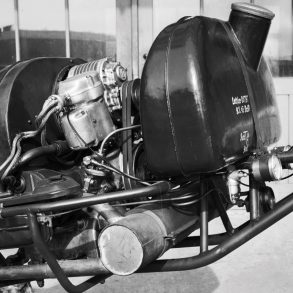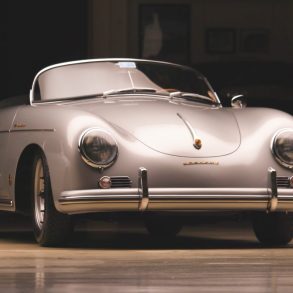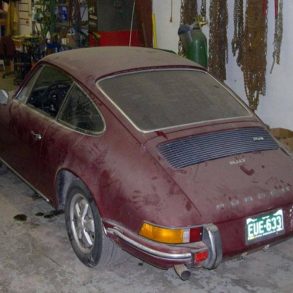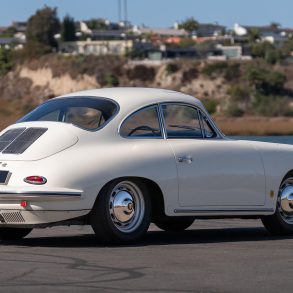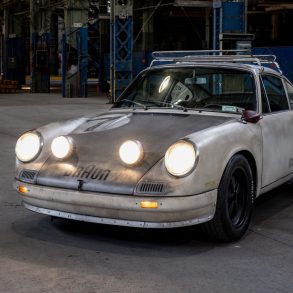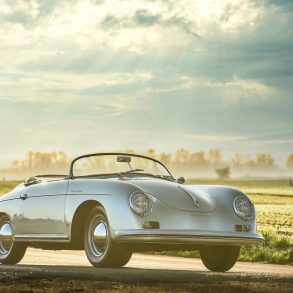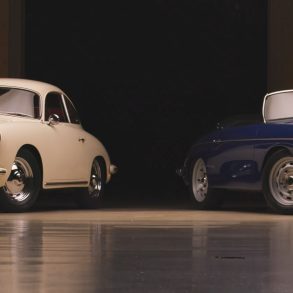Episode Four: The Porsche 906 & 911R
Welcome to The Audiobahn, the Stuttcars.com podcast focused on all things Porsche. In our first series, we’re exploring the history of venerable 911: its history, origins, achievements, and future.
Audiobahn Episode Four is all about the Porsche 906 and the 911R.
Read the Podcast Transcript
B: Hi everyone and welcome to the Audiobahn, your Porsche podcast. I’m Brayden Clark, this is Chris Carnduff. On this podcast we dive into the really great articles written on stuttcars.com, pulling out really awesome information about them and diving into the history of Porsche. Over this current series we’re going into the history of the 911. From the very beginning, back at the 356, all the way to modern times.
So today we’ve got a really cool topic. Chris what are we talking about this week?
C: Well I know we were going to talk about the 911 R, but this week instead I decided we were going to talk about the 911 R and the 906.
B: Okay, I was going to say.
Cool, so we’re talking about the 911 R and the 906. Let’s go.
Okay Chris, what are we talking about?
C: Racing.
B: Okay.
C: Racing is romantic. I mean we can all see that from, you know, how successful F1, you know, drive or die I think it’s called.
B: Or Herbie the Love Bug.
C: Or Herbie the Love Bug. Or all the numerous really cool stories around racing, you know how they go. Racing is romantic.
And the only way you win championships is if you have a great driver or the best driver really. And the best car. And in the 1960s there was a clear top dog in all of racing and that was Ferrari and everybody was chasing after them.
Now there is a well-documented and extraordinarily well filmed story on how Ford pushed to try to beat Ferrari for the 1966 Le Mans race and they were trying to beat them in 65 as well and throughout the 60s. But that’s a really well documented story. Porsche was trying to do the same thing that Ford was; they were chasing, they were chasing after Ferrari. They were really wanting to bring these guys down, so they had an idea they were going to make a car and that car was going to be the 906 and the 904. It was the Carrera series of cars.
B: Okay.
C: And they followed the two basic principles of race car creation; you make your car lighter and you make the engine more powerful.
So the 906 weighed in at a staggeringly light 1,300 pounds.
B: So that’s a complete and absolute featherweight of a car.
C: Oh like you wouldn’t believe. It is, you know, you blink at it the wrong way and the air produced by your eyelashes could blow it down the track, right. It is wildly light and what they did with that is they put in a powerful engine, which was your all but standard 2-litre flat six that they put in all the 911s of the day. But what made it not standard was that they were going to include the latest in the evolution of fuel delivery.
B: Which is fuel injection.
C: You got it, but not electronic fuel injection, like we’re not there yet. We’re in mechanical fuel injection.
B: Yeah.
C: It’s a super cool system which I won’t get into here because it would take up far too much time, but it delivered far superior atomization into the cylinders which means that the fuel was able to spread better. It was able to propagate the flame better, which produces a bigger boom, which equals more power.
B: Yeah.
C: So this was a flat six engine that was putting out now 230 horsepower, which you’ll remember is a significant upgrade.
B: It’s a huge upgrade and it’s a huge upgrade in a frame that is significantly lighter.
C: Right. Actually do you want to run us through some of the stats?
B: Absolutely. So I’ve got the stats right here. This thing had a 2.0 litre engine and generated a whopping 230 brake horsepower at 8 000 RPM, giving it a mind-blowing top speed of 168 miles per hour and a 3.9 second not to 60. It also generated the 145 pound-feet of torque at, which I know you find interesting, 6000 RPM, and again, weighed all of 1,200 pounds. The thing is like 1,280. The things a Monster.
C: Yeah, it’s wild. It is exactly what you think a race car should be.
B: Yeah.
C: I mean I know that there are going to be people out there who know about Colin Chapman’s philosophy around how to make lotuses, which was the same super light, super powerful, and if they break as soon as they cross the finish line, that’s perfect. Right. But Porsche actually didn’t want them to break down, so they engineered them properly. Yeah. But yeah, that it revs to 8,000 RPM for peak power is a pretty big deal.
B: That’s high.
C: Yeah, it’s really high, and the only way they can get there is with the camshaft movement that they have, right. If you’re running push rods in your engine it’s so many moving parts that being able to rev that high requires a lot of lubrication and the oil viscosity will run dry, you’ll start running everything dry, and then pop goes the engine. Right. So instead what these guys have is overhead cams and we’ve been talking about how they had single overhead cams. This engine had dual overhead cams, which one of the cams was dedicated to, of course, the fuel injection system and the other one was dedicated to the valves. So it was able to rev at a much higher rate because it was naturally aspirated, first of all, and because it had the overhead cams and it had lubrication issues that a traditional in-block V configuration engine has.
B: Yeah.
C: So all of Porsche’s engineering is going into this one and we get this big big brain move and boom 230 horsepower out of six cylinders.
B: In something that’s the weight of like a sock.
C: Yeah exactly. So this was a successful car.
B: Right.
C: So we all talk about 66 it’s like man Ford went out with the GT40 and they beat up on Ferrari and they got first, second and third at Le Mans. Yeah, great. Porsche got fourth, fifth and sixth and seventh.
B: Poor freaking Ferrari.
C: Yeah, so Ferrari, who was like top of the top of the tables all throughout racing in the 60s, they went from first and like really high up on the tables in 65 to eighth being their highest placement the next year because Porsche and Ford had caught up. Which is awesome.
B: Okay, so why do we care?
C: Trust me this is all important, right. The 911 R comes from the 906, and the 911.
B: Okay.
C: That’s kind of the embodiment of two. Because as Porsche was pushing to beat Ferrari at Le Mans, they were also pushing to beat Ferrari in other places too. They didn’t just want to win at Le Mans, they wanted to win everywhere. So they wanted to enter a car into the GT class. The GT class, the Grand Touring class, has to be a production vehicle. So how do you get in? Well you take your production car, you make a race variant of it, and then you homologate it. So the race variant, the way that they figured that one out for the 911 was, well you take the 911 everything, because the suspension is great, the body’s super light, this is all perfect. Well what do we need to do? Oh I got a great idea, let’s take the 906 engine and shove it in there. And boom.
B: And you just generate so much more power in the 911 frame.
C: You got it. Actually, do you want to run through some 911 R Quick stats for us?
B: Absolutely. So it also had a 2.0 litre engine, generating the same 230 brake horsepower, and rather than a top speed of 168, which is ridiculous for the 906, this one generated a slightly more modest 122 miles per hour top speed. But still a just disgusting acceleration of 0 to 60 in six seconds flat, which for a production car back then, tasty. And it obviously weighed more, it weighed 1700 pounds, but it’s a production car, it’s a little bit nicer than a stripped down racer.
C: Yeah and it is even actually a stripped down racer, right, because it’s only 1700 pounds. Whereas the 911 L and the 911 S would have been closer to like 23-2,200 lbs.
B: Yeah we’ve got those stats right here, too. We are looking at… I don’t have those stats right on me, never mind, but you’re probably right.
C: That’s all right. Its 500 pounds lighter than the average 911, the 911 R is. So they stripped out the interior, they made it lighter everywhere they could, they added lightness, as I say. Put in the heavier engine, or not the heavier engine, but the more powerful engine.
B: Yeah.
C: And Bob’s your uncle, you have a race variant. You have the 911 R. So now all you have to do, is you have to homologate it. Which means you have to get FIA to accept it into the class of racing you want it to. So it has to meet all the standards. And their standard was that, if you’re racing a GT car, you have to have produced 500 of them for sale. Less than 50 total 911 R’s would ever be produced.
B: Interesting.
C: So they had this perfect GT car and they weren’t able to totally homologate it, which meant it wasn’t able to be entered into the GT category. It was only able to be entered into the Prototype category, which means it was up against cars like the 1966 Ford GT40. You know the one that the 906 couldn’t even beat.
B: Oh yeah, yep.
C: So the Ford GT40 had a power to weight ratio of, here let me read this one for you, 373 horsepower per ton. It had a 475 horsepower engine. That GT40. The very impressive 911 R had a power to weight ratio of 255 horsepower per ton.
B: So it’s getting left in the Dust by GT40.
C: Yeah and it’s, it’s sad, right.
B: Yeah.
C: You look back on it and you’re going man this car was going to just tear up the GT class.
B: It wasn’t meant to race prototypes.
C: Exactly. Yeah. But that’s what it ended up doing. And to be fair, in 1969 when the relaunch of the Tour de France happened and this wasn’t the motorcycle or the manual cycle. This isn’t the analog cycle Tour de France, this is the automotive Tour de France. And it won. It did everything. And that was mostly due to its weight and how nimble it was.
But that was the only Victory you really had, because of the inability of Porsche to produce more than or to produce the 500 cars, mostly due to financial strains, they were really pushing for race cars at this point. Germany was still in the post-war period, the Cold War was happening, so they were only able to produce about 20 customer cars and less than 50 in total. They decided to stop production of the 911R in 1968. So after that they were closing the book on the 911 R, only for it to be reopened a few years later with the next chapter of 9 11 racing, which we’ll talk about in a future episode.
B: Okay, so in this episode we’ve just gone over the 906, as well as the 911 R and kinda walked through how the 906, and it’s just disgustingly beautiful engine, gave us the 911 R. What are we gonna kick off in the next episode with?
C: Well we’re gonna have to sit down and talk about that one. We’re getting into the 70s now. The 60s were the time when the 911 came together and we got to explore how the engineering changed and it became something much more than what the 356 ever could be. The 70s bring their own whole bundle of everything going on, so the next episode I’m gonna, let’s leave it as a mystery right now.
B: But we’re really going to be diving into what happens with the 911 in the 70s.
C: You got it.
B: Love it. Guys, thank you so much for being here, thanks for joining Chris and I. If you want to read about any of the cars we’re talking about, head over to Stuttcars.com. The articles there are amazingly written and there’s a really good membership program, so you can get access to even more amazing content.
Okay, we’ll see you next week


